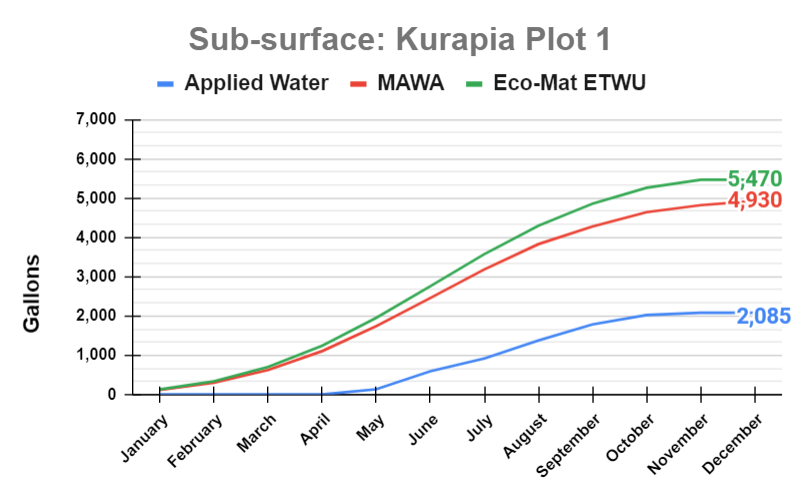Kurapia: A New Low-Water Groundcover
The CCUH has been involved in researching the performance of Kurapia (Lippia nodiflora, sterile variety), a low-water groundcover developed in Japan. It was developed for drought conditions and is tolerant of different soils and a range of temperatures. It grows quickly to establish ground cover but is sterile, so unwanted seeding does not occur. For more information about its use, click here.
Water Deficit Trial
Kurapia was included in a University of California at Riverside study that evaluated the performance and appearance of 19 turfgrass species or cultivars in drought conditions. It performed best along with Kikuyugrass and buffalograss, two warm-season turfgrasses. Click here for a full report of the study.
Irrigation Trial
Researchers at UC Davis, UCANR and CCUH conducted a landscape irrigation trial of Kurapia. To learn about how Kurapia performed and see photos of it under various amounts of irrigation, read the full report here.
SmartLandscape at UC Davis- Kurapia 2024 Water Applied Data
Below, readers can find the 2024 water applied data and key findings for Kurapia at SmartLandscape. Plot 1 showcases Eco-Mat sub-surface irrigation and Plot 2 uses MP Rotator surface irrigation. In addition to calculating the ETWU and MAWA for each plot, SmartLandscape records the actual applied water, as seen in the graphs below.




SmartLandscape at UC Davis- Kurapia 2023 Water Applied Data
Below, readers can find the 2023 water applied data and key findings for Kurapia at SmartLandscape. Plot 1 showcases Eco-Mat sub-surface irrigation and Plot 2 uses MP Rotator surface irrigation. In addition to calculating the ETWU and MAWA for each plot, SmartLandscape records the actual applied water, as seen in the graphs below.


Key Findings- Plot 1
- 100% Kurapia (turf alternative) can be planted and meet MWELO for 2nd year
- Hydrawise soil moisture sensor (SoilClik/Watermark) based controller managed applied water below MAWA (irrigation 7 day/week window)
- Sub-surface irrigation using Eco-Mat can meet MWELO with 100% Kurapia
- Kurapia mowed less than 3 times per year
- SoilClik sensor programmed at a tension = 100 (very dry) versus 60 – 100 (clay) in 2022
- Tension = 100 (very dry) for 2023 was too low and Kurapia was more stressed than in 2022. Recommended tension = 60 -100 (clay)


Key Findings- Plot 2
- 100% Kurapia (turf alternative) cannot be planted and meet MWELO when surface irrigated by MP Rotator nozzles
- Hydrawise soil moisture sensor (SoilClik/Watermark) could not manage applied water below MAWA (irrigation 7 day/week window)
- Kurapia mowed less than 6 times per year
- SoilClik sensor programmed at a tension = 100 versus 60 – 100 in 2022
- Tension = 100 for 2023 was too low and Kurapia was more stressed
Please direct inquiries to:
